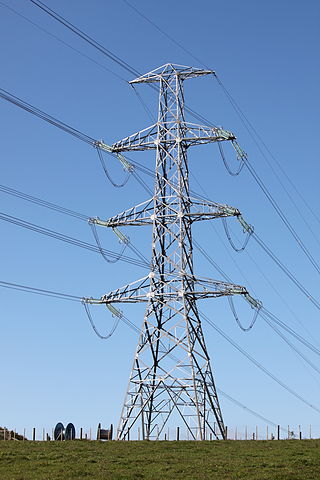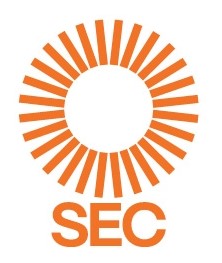The Victorian Power Exchange (VPX) was established in 1995 by the Victoria State Government as part of a restructuring of the State Electricity Commission of Victoria (SECV) and the establishment of a competitive electricity market.
The Victorian Power Exchange (VPX) was established in 1995 by the Victoria State Government as part of a restructuring of the State Electricity Commission of Victoria (SECV) and the establishment of a competitive electricity market.
Its functions were to monitor and control the wholesale power exchange; ensure security of the power system; and plan and direct the augmentation of the transmission system within Victoria.
The design of the electricity market and the operation of the power exchange formed the basis for the National Electricity Market.
VPX was a not-for-profit corporation owned by the Government of Victoria. The board of directors comprised representatives of the electricity industry and independent members.
VPX was wound up in 1998 with the establishment of NEMMCO and the commencement of the National Electricity Market. VPX's transmission planning function was transferred to VENCorp, which had been established in December 1997. [1]
The New Zealand electricity market (NZEM) is a decentralised electricity market regulated by the Electricity Industry Participation Code administered by the Electricity Authority (EA). The authority was established in November 2010 to replace the Electricity Commission.
In a broad sense, an electricity market is a system that facilitates the exchange of electricity-related goods and services. During more than a century of evolution of the electric power industry, the economics of the electricity markets had undergone enormous changes for reasons ranging from the technological advances on supply and demand sides to politics and ideology. A restructuring of electric power industry at the turn of the 21st century involved replacing the vertically integrated and tightly regulated "traditional" electricity market with multiple competitive markets for electricity generation, transmission, distribution, and retailing. The traditional and competitive market approaches loosely correspond to two visions of industry: the deregulation was transforming electricity from a public service into a tradable good. As of 2020s, the traditional markets are still common in some regions, including large parts of the United States and Canada.

The electric power industry covers the generation, transmission, distribution and sale of electric power to the general public and industry. The commodity sold is actually energy, not power, e.g. consumers pay for kilowatt-hours, power multiplied by time, which is energy. The commercial distribution of electricity started in 1882 when electricity was produced for electric lighting. In the 1880s and 1890s, growing economic and safety concerns lead to the regulation of the industry. What was once an expensive novelty limited to the most densely populated areas, reliable and economical electric power has become an essential aspect for normal operation of all elements of developed economies.
The National Electricity Market (NEM) is an arrangement in Australia's electricity sector for the connection of the electricity transmission grids of the eastern and southern Australia states and territories to create a cross-state wholesale electricity market. The Australian Energy Market Commission develops and maintains the Australian National Electricity Rules (NER), which have the force of law in the states and territories participating in NEM. The Rules are enforced by the Australian Energy Regulator. The day-to-day management of NEM is performed by the Australian Energy Market Operator.

A regional transmission organization (RTO) in the United States is an electric power transmission system operator (TSO) that coordinates, controls, and monitors a multi-state electric grid. The transfer of electricity between states is considered interstate commerce, and electric grids spanning multiple states are therefore regulated by the Federal Energy Regulatory Commission (FERC). The voluntary creation of RTOs was initiated by FERC Order No. 2000, issued on December 20, 1999. The purpose of the RTO is to promote economic efficiency, reliability, and non-discriminatory practices while reducing government oversight.

The State Electricity Commission of Victoria is a government-owned electricity supplier in Victoria, Australia. It was set up in 1918, and by 1972 it was the sole agency in the state for electricity generation, transmission, distribution and supply. Control of the SECV was by a Board of Commissioners appointed by the Victorian Government. After 1993, the SECV was disaggregated into generation, transmission and distribution companies, which were further split and then privatised in the mid to late 1990s. However, electricity supply agreements with the Portland and Point Henry aluminium smelters were retained by SECV, which continued as their electricity supplier.

A transmission system operator (TSO) is an entity entrusted with transporting energy in the form of natural gas or electrical power on a national or regional level, using fixed infrastructure. The term is defined by the European Commission. The certification procedure for transmission system operators is listed in Article 10 of the Electricity and Gas Directives of 2009.
The Victorian Energy Networks Corporation (VENCorp) was a Victorian State Government-owned entity established in December 1997 responsible for the efficient operation of gas and electricity industries in Victoria, Australia, within Victoria's privatised energy industries. It was funded by energy industry participants.
The Electricity Supply Industry Planning Council (ESIPC) was a South Australian government agency responsible for the effective operation of the electricity industry in South Australia. According to a statement on its website, the agency was established "to provide expert, independent advice to the South Australian Government and the Essential Services Commission of South Australia (ESCOSA) in relation to the state of the electricity supply industry in South Australia."

EirGrid plc is the state-owned electric power transmission operator in Ireland. It is a public limited company registered under the Companies Acts; its shares are held by the Minister for the Environment, Climate and Communications. It is one of a number of Irish state-sponsored bodies and is regulated by the Commission for Regulation of Utilities.

ISO New England Inc. (ISO-NE) is an independent, non-profit Regional Transmission Organization (RTO), headquartered in Holyoke, Massachusetts, serving Connecticut, Maine, Massachusetts, New Hampshire, Rhode Island, and Vermont.
The Energy Commission, abbreviated ST, was created under the Energy Commission Act 2001 as a new regulator for the energy industry in Peninsular Malaysia and Sabah. The Commission was established to ensure that the energy industry is developed in an efficient manner so that Malaysia is ready to meet the new challenges of globalisation and liberalisation, particularly in the energy supply industry.
The Australian Energy Market Operator (AEMO) performs an array of gas and electricity market, operational, development and planning functions. It manages the National Electricity Market (NEM), the Wholesale Electricity Market (WA) (WEM) and the Victorian gas transmission network. AEMO also facilitates electricity and gas full retail contestability, overseeing these retail markets in eastern and southern Australia. It is additionally responsible for national transmission planning for electricity and the establishment of a Short Term Trading Market (STTM) for gas.

Madhya Gujarat Vij Company Ltd. is an electricity company that was incorporated on 15 September 2003 by Gujarat Electricity Board (GEB). The Company obtained the Certificate of the Commencement of Business on 15 October 2003. The company was one of several created as a part of efforts towards restructuring of the power sector in the state of Gujarat in India.
Central Electricity Regulatory Commission (CERC), a key regulator of power sector in India, is a statutory body functioning with quasi-judicial status under sec – 76 of the Electricity Act 2003. CERC was initially constituted on 24 July 1998 under the Ministry of Power's Electricity Regulatory Commissions Act, 1998 for rationalization of electricity tariffs, transparent policies regarding subsidies, promotion of efficient and environmentally benign policies, and for matters connected Electricity Tariff regulation. CERC was instituted primarily to regulate the tariff of Power Generating companies owned or controlled by the government of India, and any other generating company which has a composite scheme for power generation and interstate transmission of energy, including tariffs of generating companies.
KOSTT j.s.c is a transmission system operator company with the headquarters in Pristina, Kosovo. It plays an important role in the energy sector in Kosovo. As a market operator it is responsible for the organization and administration of trades in electricity and the management of the settlement process. It is a member of the Energy Community. KOSTT is control area and It is synchronously connected with Continental Europe and cooperating with RG CE TSOs to abide by the EU packages. It expects to become a member of the European Network of Transmission System Operators for Electricity in the future.

The Electricity Act 1989 provided for the privatisation of the electricity supply industry in Great Britain, by replacing the Central Electricity Generating Board in England and Wales and by restructuring the South of Scotland Electricity Board and the North of Scotland Hydro-Electric Board. The Act also established a licensing regime and a regulator for the industry called the Office of Electricity Regulation (OFFER), which has since become the Office of Gas and Electricity Markets (OFGEM).

Powerlink Queensland is an electricity transmission system operator owned by the Government of Queensland which operates the high-voltage electricity transmission infrastructure in Queensland.

The Gas Act 1986 created the framework for privatisation of the gas supply industry in Great Britain. This legislation would be replacing the British Gas Corporation with British Gas plc. The Act also established a licensing regime, a Gas Consumers’ Council, and a regulator for the industry called the Office of Gas Supply (OFGAS).